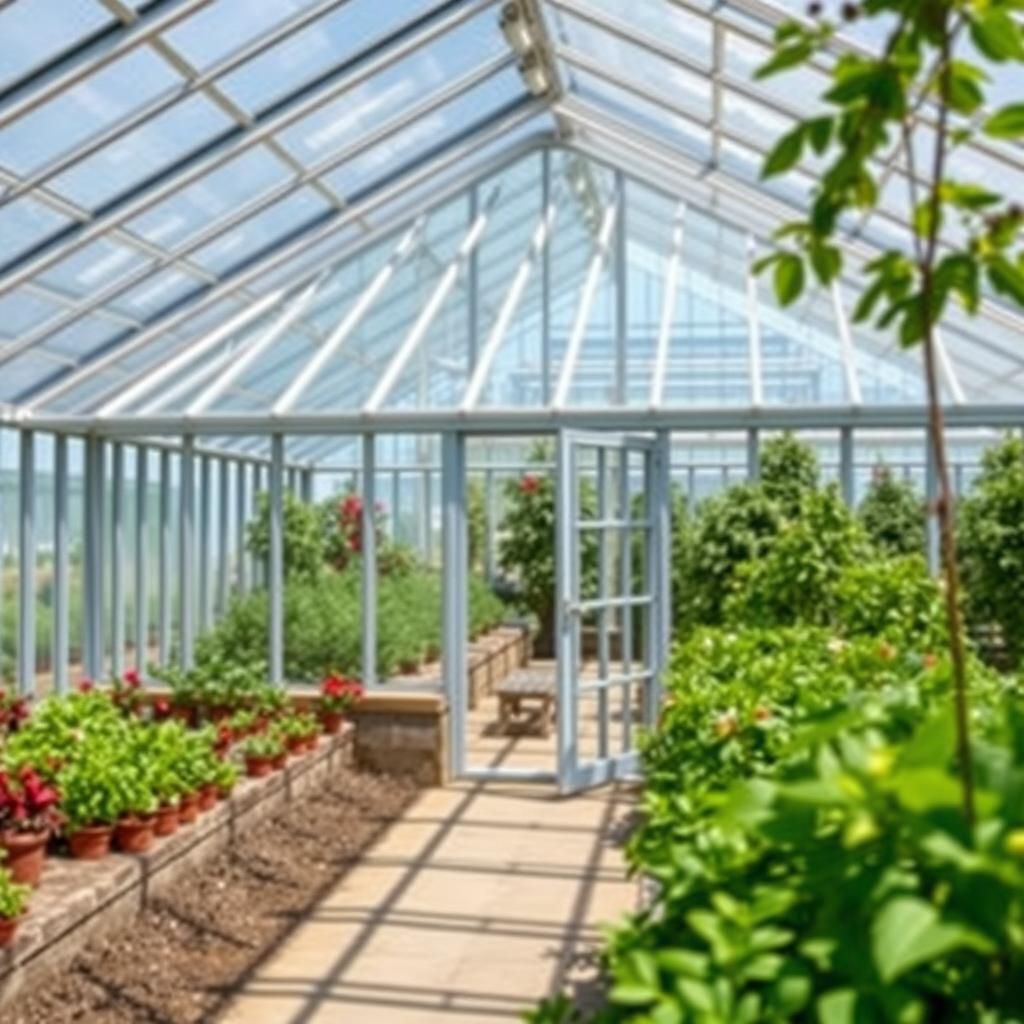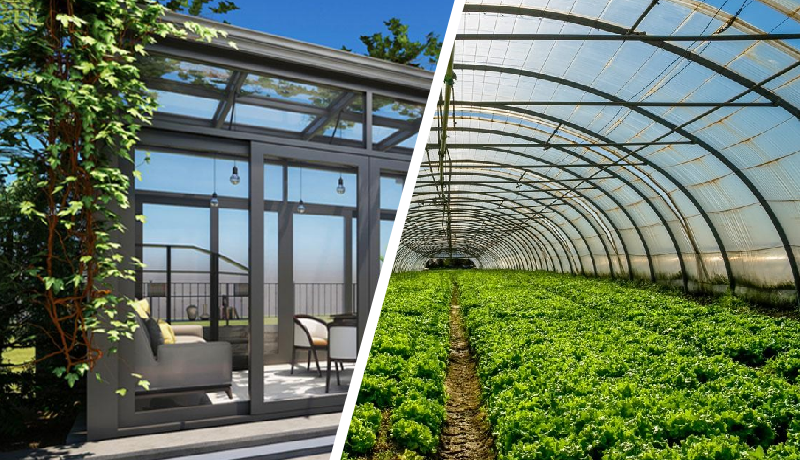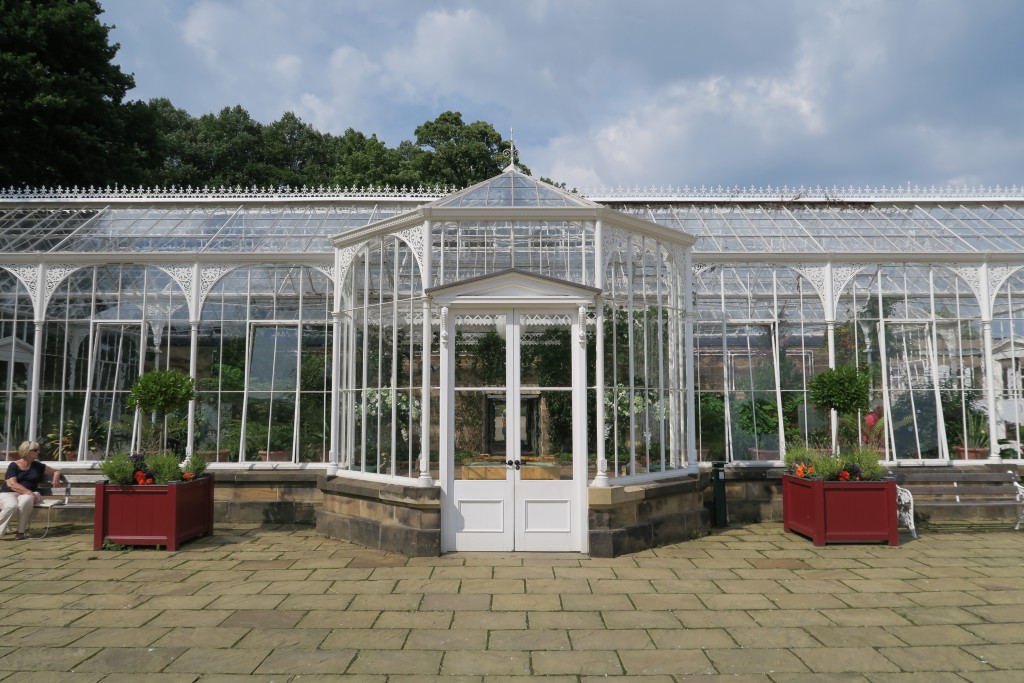What is the difference between a greenhouse and a glasshouse? Understanding Key Features and Benefits

When it comes to horticulture, the terms greenhouse and glasshouse are often used interchangeably, yet they refer to distinct structures with unique characteristics. Understanding the differences between these two environments is crucial for gardeners, plant enthusiasts, and professionals looking to optimize their growing conditions. Both greenhouses and glasshouses serve the primary purpose of creating a controlled climate for plants, but variations in materials, design, and functionality can impact their effectiveness. This article will delve into the key features and benefits of each, helping you make an informed decision on which structure best suits your gardening needs.
What is the Difference Between a Greenhouse and a Glasshouse?
A greenhouse and a glasshouse are both structures designed to promote the growth of plants by creating a controlled environment, but they differ primarily in their construction and materials. A greenhouse typically uses a combination of materials such as plastic film, polycarbonate panels, or glass, allowing for various options in terms of insulation, light transmission, and durability. In contrast, a glasshouse is specifically constructed using glass panels, providing superior light penetration and aesthetic appeal but often at the expense of energy efficiency. The choice between the two often depends on factors such as climate, budget, and the specific types of plants to be cultivated.
Construction Materials
The main difference in construction materials between a greenhouse and a glasshouse is the use of glass in glasshouses versus a variety of other materials in greenhouses. Greenhouses may incorporate polyethylene film or acrylic panels, which can be less expensive and easier to install. The choice of materials affects factors such as heat retention, the cost of overall construction, and maintenance needs. Additionally, the type of material used can also influence how well light can permeate the structure, impacting plant growth.
Light Transmission
In terms of light transmission, glasshouses generally allow for more natural sunlight to enter, because glass does not obstruct light wavelengths as much as plastic can. This can result in better growth conditions for plants that thrive in bright light. However, the transparency of glass also means that glasshouses can overheat more quickly than other types of structures, necessitating additional ventilation or shading strategies. In contrast, greenhouses may use darker materials that filter light, which can be beneficial for certain types of plants or in regions where too much sunlight could be detrimental.
Temperature Control
The ability to control temperature is another point of differentiation between greenhouses and glasshouses. Glasshouses tend to maintain a consistent internal temperature due to the higher level of insulation offered by glass, although they may require more active cooling systems. Greenhouses, depending on their materials and design, may experience greater temperature fluctuations. For growers, understanding these temperature dynamics is crucial for optimizing the growing conditions for various plants sensitive to temperature changes.
Cost Considerations
When evaluating cost, glasshouses tend to come with a higher initial investment due to the price of glass and the required structural supports. In contrast, greenhouses can be built at a lower cost, especially if utilizing plastic sheeting or other economical materials. However, long-term costs for maintenance, heating, and cooling vary significantly, with glasshouses potentially incurring lower heating costs due to better thermal performance, offsetting their initial expense over time.
Aesthetic Appeal
Aesthetic appeal is often a significant factor when choosing between a greenhouse and a glasshouse. Glasshouses are usually considered more visually appealing due to their sleek, clear appearance which allows for beautiful views of the plants inside. This is particularly relevant for garden enthusiasts who want to enhance the visual experience of their outdoor space. Consequently, glasshouses may be favored for public gardens or ornamental pursuits, while functional greenhouses are commonly used in agricultural contexts where aesthetics are less of a concern.
| Feature | Greenhouse | Glasshouse |
|---|---|---|
| Construction Materials | Various (plastic, polycarbonate) | Primarily glass |
| Light Transmission | Variable, depending on material | High light penetration |
| Temperature Control | More fluctuations | Consistent temperature |
| Cost | Generally lower initial cost | Higher initial investment |
| Aesthetic Appeal | Functional | Highly attractive |
Is a greenhouse the same as a glasshouse?

A greenhouse and a glasshouse often refer to similar structures designed for growing plants, but there are subtle differences in terminology and usage depending on the region and specific context.
Definition of a Greenhouse
A greenhouse is typically defined as a structure made of transparent materials, such as plastic or glass, that allows sunlight to enter and retain heat. It's primarily used for growing plants, vegetables, and flowers in a controlled environment, protecting them from harsh external weather conditions.
- The main goal of a greenhouse is to create an ideal growing environment.
- Greenhouses can vary in size from small home setups to large commercial operations.
- They often feature ventilation systems to regulate temperature and humidity.
Definition of a Glasshouse
The term glasshouse specifically refers to a type of greenhouse that is predominantly made of glass. While it serves the same purpose of protecting and nurturing plant life, the terminology is often used interchangeably with greenhouse, particularly in British English.
- Glasshouses are generally more aesthetically pleasing due to their translucent structure.
- They may allow more natural light to penetrate compared to plastic-covered greenhouses.
- Glasshouses can be more expensive to build and maintain due to the materials used.
Regional Variations
In many parts of the world, particularly in the United Kingdom, the term glasshouse is more commonly used, while in places like the United States, the term greenhouse tends to dominate. This can sometimes lead to confusion regarding whether they are the same or imply different structures.
- In the UK, glasshouses are regarded as a classic type of greenhouse.
- In the US, the term greenhouse encompasses a broader range of materials, including plastic.
- Understanding regional terminology is crucial for effective communication related to horticulture.
Utilization and Functionality
Both greenhouses and glasshouses serve the primary function of extending the growing season and allowing for the cultivation of plants in environments that might not support them naturally. However, their construction can impact the types of plants that thrive inside them.
- Greenhouses with plastic coverings may be better at insulating and preventing heat loss.
- Glasshouses tend to be more suitable for tropical plants due to increased light exposure.
- Both structures can be outfitted with advanced agricultural technologies for monitoring and management.
Environmental Impact
The environmental footprint of both structures can vary significantly based on materials and energy used. Greenhouses made from plastic can contribute to plastic pollution, while glasshouses, although more sustainable, can require more energy for heating.
- Plastic greenhouses may incur lower upfront costs but have long-term waste implications.
- Glasshouses provide better durability but can lead to greater energy consumption.
- Both types can benefit from sustainable practices, such as solar panels or rainwater harvesting.
What are the disadvantages of glass greenhouses?

The disadvantages of glass greenhouses can significantly impact their efficiency, maintenance, and overall functionality for gardening or commercial purposes. Below are some key drawbacks that users should consider:
Initial Cost
The initial cost of glass greenhouses is often much higher than that of alternatives like plastic or polythene structures. This can deter potential users who are looking for budget-friendly options. Key points include:
- Material Costs: Glass is more expensive than other greenhouse materials, increasing the overall budget.
- Installation Expenses: The requirement for professional installation adds to the overall costs.
- Long-term Investment: While durable, glass greenhouses can pose a significant financial burden upfront.
Weight and Structural Requirements
Glass is significantly heavier than many greenhouse materials, necessitating reinforced structures. This can complicate construction and increase costs. Significant aspects include:
- Foundation Needs: A solid base is required to support the weight of the glass, leading to increased foundation costs.
- Design Complexity: Architectural considerations must be taken into account, often requiring specialized knowledge.
- Expanded Footprint: More space might be needed for support structures compared to lighter materials.
Temperature Regulation
Controlling the temperature within glass greenhouses can be challenging due to their high transparency levels, which invite excessive sunlight. Important points include:
- Overheating Risks: Glass can cause internal temperatures to rise quickly, potentially damaging sensitive plants.
- Heating Costs: Conversely, during the night, temperatures drop significantly, increasing the need for heating solutions.
- Air Circulation Issues: Poor ventilation can lead to hot spots, making temperature regulation more complex.
Maintenance Requirements
Glass greenhouses require regular maintenance, which can be labor-intensive and costly over time. Factors to consider include:
- Cleaning Needs: Glass surfaces accumulate dirt and residues, impacting light quality which necessitates frequent cleaning.
- Repair Costs: Broken glass panels require immediate replacement, which can be costly and time-consuming.
- Weather Vulnerability: Glass can be susceptible to storms and hail, leading to potential damage that requires ongoing repairs.
Limited Insulation
While glass provides clarity, it offers limited insulation, making it less efficient for thermal control compared to some alternative materials. Key considerations include:
- Heat Retention Issues: During colder months, glass does not retain heat well, necessitating additional heating solutions.
- Energy Costs: Higher energy bills can accrue due to the need for heating in winter and cooling in summer.
- Condensation Problems: Poor insulation may lead to condensation, promoting plant diseases and affecting growth.
What do British call a greenhouse?

The term that the British commonly use for a greenhouse is simply greenhouse. However, in some regions, particularly in historical or more traditional contexts, it may also be referred to as a glasshouse.
Definition of a Greenhouse
A greenhouse is a structure primarily made of transparent materials like glass or plastic, designed to create a suitable environment for plants to grow. The main purpose is to trap sunlight and retain heat, thus allowing for the cultivation of plants in conditions that may not be ideal in the external environment.
- Provides a controlled climate for plants.
- Protects plants from extreme weather conditions.
- Allows for the extended growing season.
Types of Greenhouses
There are several types of greenhouses that cater to different gardening needs and aesthetic preferences. Each type varies in structure, size, and materials used, providing options for various gardening practices.
- Freestanding Greenhouses: Stand alone with ample space, ideal for serious gardeners.
- Attached Greenhouses: Built against a wall of a house, utilizing the structure for added warmth.
- Hoop Houses: Simple structures made with a frame covered by plastic, cost-effective and portable.
Importance of Greenhouses in Gardening
The role of greenhouses in gardening is crucial since they allow gardeners to cultivate a diverse range of plants year-round. This is particularly significant in colder climates where outdoor gardening can be limited due to weather conditions.
- Enables year-round growing of fruits, vegetables, and flowers.
- Supports the propagation of plants and seedlings.
- Enhances the ability to grow exotic or rare plants that may not survive outdoors.
Materials Used for Greenhouses
Greenhouses can be constructed using a variety of materials, each with its unique benefits. The choice of material often depends on budget, desired durability, and the climate in which the greenhouse will be used.
- Glass: Provides excellent light penetration but can be expensive and heavy.
- Polycarbonate: Lightweight and durable, offers good insulation and UV protection.
- Plastic Film: Cost-effective and easy to install but may need replacement every few years.
British Influence on Greenhouse Design
The design of greenhouses has been notably influenced by British gardening traditions. Historical figures, such as Joseph Paxton, contributed significantly to the architectural development of glasshouses, which were often used in botanical gardens and estates throughout Britain.
- Promotes unique architectural styles, such as Victorian glasshouses.
- Integrates into landscape design in public parks and private gardens.
- Supports a legacy of horticultural excellence in British gardening culture.
What is a glasshouse?

A glasshouse is a structure made predominantly of glass, designed to create an optimal environment for growing plants. It allows sunlight to enter freely while minimizing heat loss. Glasshouses are commonly used for horticulture and are particularly beneficial for growing delicate and exotic plants that may not thrive in the local climate. In addition to providing a controlled environment, glasshouses can also extend the growing season for certain crops.
Benefits of Using a Glasshouse
A glasshouse offers numerous advantages for plant cultivation:
- Temperature Regulation: The glasshouse provides a stable temperature that protects plants from extreme weather conditions.
- Light Enhancement: The transparent nature of glass allows maximum sunlight penetration, promoting photosynthesis.
- Humidity Control: By retaining moisture, glasshouses help maintain optimal humidity levels for plant growth.
Types of Glasshouses
There are various types of glasshouses tailored for specific needs and conditions:
- Traditional Glasshouse: Made entirely of glass panels, offering aesthetic appeal and efficient plant growth conditions.
- Cold Frame: A smaller glasshouse that provides a protective environment for seedlings and young plants.
- Greenhouse with Automated Systems: These glasshouses feature advanced technology for climate control, irrigation, and ventilation.
Materials Used in Glasshouses
The construction of a glasshouse involves specific materials that contribute to its functionality:
- Glass: The primary material used, often tempered or double-glazed for better insulation.
- Aluminum or Steel Framework: Provides structural integrity and durability against the elements.
- Polycarbonate Panels: An alternative to glass, offering insulation and impact resistance.
Maintenance of Glasshouses
Maintaining a glasshouse is crucial for optimal plant growth and longevity of the structure:
- Cleaning: Regularly clean the glass surfaces to ensure maximum light penetration.
- Ventilation: Proper ventilation is necessary to prevent overheating and humidity build-up.
- Pest Control: Monitor and address any pest infestations to protect the plants inside the glasshouse.
Applications of Glasshouses
Glasshouses serve various purposes across different fields:
- Commercial Horticulture: Used by growers to produce flowers, fruits, and vegetables year-round.
- Research and Experimentation: Scientists utilize glasshouses for controlled experiments related to botany and agriculture.
- Education: Many educational institutions use glasshouses as practical learning environments for students in agricultural studies.
Questions from Our Readers
What is a greenhouse?
A greenhouse is a structure designed to provide an ideal environment for plants by trapping heat and light. Typically made from materials like plastic or glass, greenhouses help to extend the growing season by maintaining a warmer temperature than the outside environment and protecting plants from harsh weather conditions.
What is a glasshouse?
A glasshouse is a type of greenhouse specifically constructed with glass as its main material. This allows for maximum light penetration and heat retention, making it particularly suitable for growing delicate plants that require more sunlight and specific climatic conditions.
What are the main differences between a greenhouse and a glasshouse?
The primary difference lies in the construction materials: while a greenhouse can be made of various materials, a glasshouse exclusively uses glass. Additionally, glasshouses often provide better insulation and light transmission compared to traditional greenhouses, leading to more efficient plant growth.
Which is better for growing plants?
The choice between a greenhouse and a glasshouse depends on specific needs and budget. While glasshouses offer superior light and heat advantages, they are usually more expensive. Greenhouses made from other materials can be more cost-effective and still provide an adequate environment for plant growth.

If you want to read more articles like What is the difference between a greenhouse and a glasshouse? Understanding Key Features and Benefits, we recommend you check out our Greenhouse category.
Leave a Reply
Related Articles